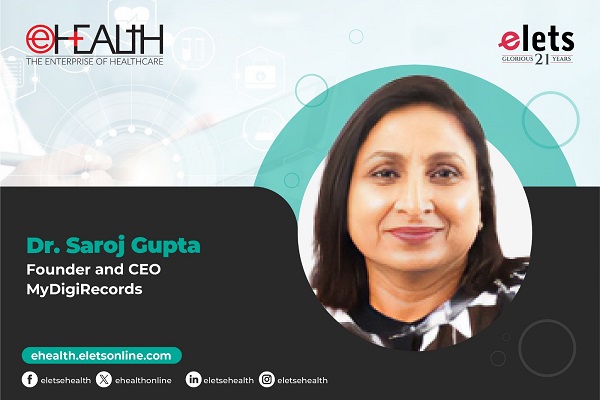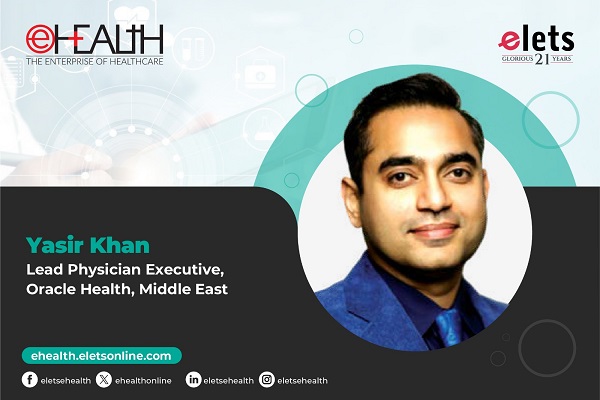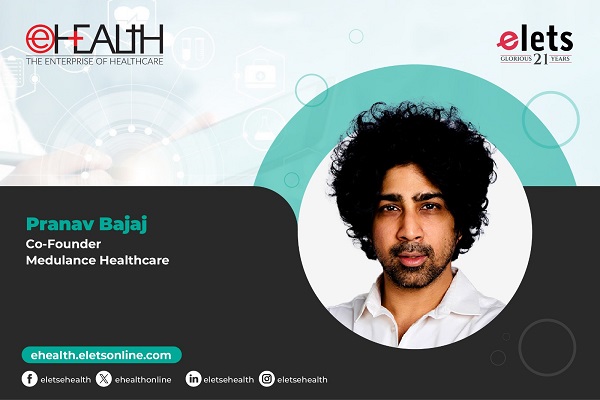

Neeraj Lal, Group COO, talk at length about their rendezvous with telemedicine to Elets News Network (ENN)
Whats your take on the spread and expanse of Telemedicine as an extension service to your brick & mortar establishment?

Telemedicine is two-way, real-time interactive communication between a patient and the healthcare provider at a distant site, supported by audio and video equipment and integrated medical devices. We are using this platform to connect our patients in all our five hospitals based out of South Gujarat from Vadodara to Surat. It gives us numerous benefits as a complement to traditional in-person medical care.
Telemedicine particularly is helpful in rural areas of South Gujarat, where the shortage of healthcare providers had led to a lack of accessibility to both basic healthcare and specialty care.
Through telemedicine, our patients get access to healthcare faster, which is a leading factor in improved patient engagement and better outcomes.

As the healthcare industry is being driven towards value-based care, the use of telehealth technologies result in many positive outcomes, including fewer hospital readmissions, more faithful following of prescribed courses of treatment, and faster recovery than that of patients not receiving remote intervention.
Satellite OPDs supported by Telemedicine in and around Vadodara, Bharuch and Surat offering echo, basic pathology and consultation 8 per cent of revenue through Telemedicine initiative
This is allowing our tertiary care set-ups in Surat and Vadodara to create hub-and-spoke networks to provide each other with support. By easily sharing their expertise outside their own institutions, our doctors are offering incredible value to their medical colleagues and those colleagues patients.
In what all ways have you juxtaposed the two set-ups? What percentage of your revenue targets are met through these expansion services?
We are having satellite OPDs supported by Telemedicine in various small towns, including villages in and around Vadodara, Bharuch and Surat. Generally, echo, basic pathology and consultation are extended in these centres. Around 8 per cent of revenue targets are generally achieved through this initiative of ours. Remote analysis and monitoring services and electronic data storage significantly reduce healthcare service costs, saving money for us, your patients and insurance companies. Telemedicine also reduces unnecessary non-urgent ER visits and eliminates transportation expenses for regular check-ups.
What policy hurdles do you find in furthering the Telemedicine footprint of your healthcare brand? What support do you envisage from the Government to further the penetration of Telemedicine services?
The Government is focusing on the penetration of Telemedicine services across rural, semi-urban and urban areas. Therefore, the healthcare chains are increasing their services footprints by expanding their telemedicine base.
A few challenges that remains at forefront are low Internet connectivity, call drop, broadband issues, etc. On the other hand, policy hurdles in furthering the Telemedicine footprint include registration of echo machines with local authority, along with the doctor name. It is a big challenge for all of us.
In what all ways does technology pose a limitation to the healthcare consultations using Telemedicine?
The overall cost of telecommunication system, especially data management apparatus and practical training of medical professionals is huge. Virtual clinical treatment decreases human interaction among the healthcare professionals and patients that increases the risk of error in clinical services, if the service is delivered by inexperienced professional. Moreover, confidential medical information can be leaked through a faulty electronic system.
| Key Risks | |
|---|---|
|
|
Telemedicine might take longer time for the difficulties in connecting virtual communication due to low Internet speed or server problem. Moreover, this system cannot provide immediate treatment, such as antibiotics. Low quality of health informatics records, such as X-ray or other images, clinical progress reports, etc. run the risk of faulty clinical treatment. Telemedicine system requires tough legal regulation to prevent unauthorised and illegal service providers in this sector.
Whats the general response and comfort of the patients when it comes to Telemedicine solutions? How do you overcome the challenge of not presenting a conventional view of healthcare interaction?
Telemedicine solutions have a greater impact for rural and remote locations and work very well in follow-up visits. People living in far-flung areas do not require travelling hundred miles and visiting big hospitals for small things today. Interaction between a specialised doctor and patient is possible at nearby community health centre or primary health centre through Telemedicine.
| Operational Hurdles | |
|---|---|
|
|
| Policy Hurdle | |
|
|
The various benefits of Telemedicine include easy accessibility to hospitals/doctors, irrespective of geographical location, lower chance of clinical errors, quick response at the time of emergency and patient convenience among others.
However, urban population does not seem to be more comfortable to the ideas of telemedicine solutions. The Government should lay emphasis in urban areas for the adoption of Telemedicine.
Be a part of Elets Collaborative Initiatives. Join Us for Upcoming Events and explore business opportunities. Like us on Facebook , connect with us on LinkedIn and follow us on Twitter , Instagram.












